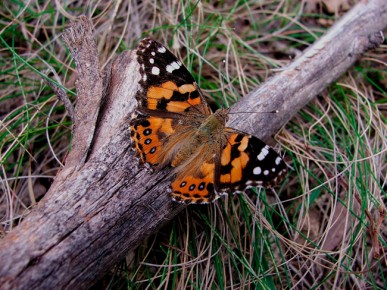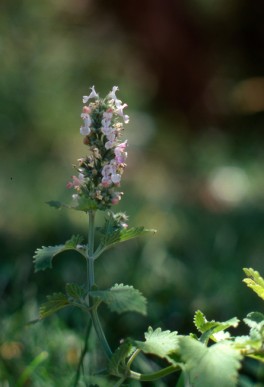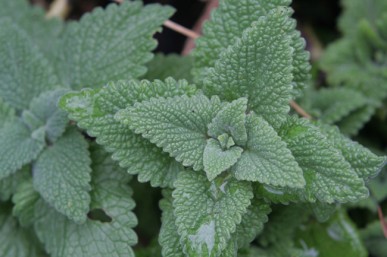
Your garden should not only be beautiful to look at but also a dynamic, balanced haven for all creatures (and plants) big and small.
These a just a few short extracts from my book Pest-Repellent Plants
from Chapter 1 Pests plants and predators
I hope this book will encourage you to embark on a journey of discovery, a journey that will add a fascinating new dimension to your gardening experience. Start by closely observing your garden and its inhabitants.
Everything in your garden depends on the other garden occupants and interacts with them. From the lowliest worm, centipede and ant … beetles, caterpillars and bugs … to frogs, lizards and birds … and finally to you. Your observations will show you the complexity and fragility of your garden ecosystem and some of the astonishing relationships that exist between insects and plants. Forget about bombarding everything that moves with a cocktail of the latest pesticides.
Instead, experiment with growing various masking and insect-repellent plants as well as plants that attract predators into the garden. Gradually you will build up a complete ecosystem where plants, pests and predators live in balance and remedies are needed only when this balance is upset.
from Chapter 3 A-Z of pest-repellent plans and other organic remedies
Catmint Nepeta cataria Lamiaceae
True catmint grows as a mounded bush to 80 cm. It has square stems and grey-green, heart-shaped, downy leaves with an aromatic fragrance. The flowers are usually white with pink markings, and grow in whorls in the leaf axils at the top of the plant. Another catmint species, Nepeta × faassenii, grows to 60 cm, has smaller grey leaves and mauve-blue flowers but does not have the pest repellent qualities of true catmint.
How to grow?
Catmint grows well in most soils as long as the drainage is good. It likes full sun and does particularly well in coastal regions. Cut back the flower heads when the flowers have finished. Grow catmint by dividing a clump into three or four pieces, from seed sown in spring or from tip cuttings taken in spring.
Pest-repellent uses
Garden Nepetalactone is one of the active chemicals found in catmint and some other plants in this family. It repels some insects and it also mimics one of the pheromones given off by aphids, which attracts parasitic braconid wasps. Scientists in the United Kingdom and the United States are using pheromone-like chemicals extracted from catmint to attract wasps and lacewings, and build up their populations so that they are ready to start parasitising aphids and mites as soon as they become active. When planted around onion patches catmint will repel onion maggots. The spray can be used as a general insect repellent if other stronger sprays are not needed or available.
Home and pets Research at Iowa University has shown that nepetalactone is ten times more effective than DEET at repelling mosquitoes (Peterson, C. & Coats, J., 2001). Other research has shown that it also repels blood-sucking flies that attack cattle and horses and even that catmint will repel cockroaches (Junwei, J. Zhu et al, 2010). Catmint oil has also been used to kill hair lice and plants grown around the vegetable garden and near houses will repel mice and rats. Fresh catmint leaves sprinkled along ants’ trails will repel them.
Catmint spray recipe Pour 1 L of boiling water over 2 firmly packed cupfuls of catmint leaves. Allow to steep until cool. Strain and use within a few hours.
Other uses Catmint is very attractive to cats and, as cats are quite capable of destroying young plants, it is best to protect them with a wire cage until well established. If you don’t like cats and don’t want them in your garden then don’t grow catmint! N. cataria is the species of catmint used medicinally.
from Chapter 4 A-Z of pests – in house and garden, and for personal and pet care.

Caterpillars of the Australian painted lady feed on daisies, capeweed, Scotch thistle and lavender. Photo by Libby Woodward
Caterpillars
The larvae of moths and butterflies. Most caterpillars are voracious feeders and can strip a leaf in a short time, but many are very species specific so will only be a problem if you are growing those plants. If there is a huge invasion, as can happen with army worms (caterpillars of several different moths) then it may be necessary to spray immediately with soap as treating with Bt or Spinosad could take too long to take effect and the damage may be done. Protect young seedlings with collars. Pick off and squash or drop into soapy water.
See Bacillus thuringiensis, basils, bay, chilli, clay, collars, diatomaceous earth, elder, feverfew, garlic, molasses, neem, oil, pyrethrum, quassia, rhubarb, soap, southernwood, spinosad and wormwood


